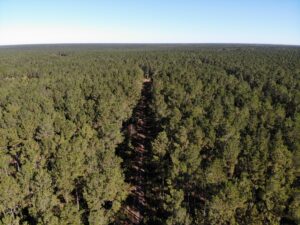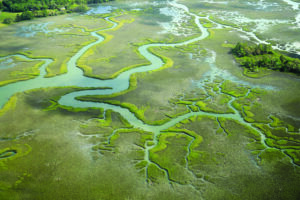Lowcountry Land Trust’s sustained success in conservation over the last 35 years has protected more than 150,000 acres primarily through the acquisition of conservation easements. Conservation easements are a legal agreement entered into voluntarily by both the landowner and Land Trust. Within the easement is a promise, fulfilled by both parties, to protect land forever. The land remains the property of the landowner, and the easement stays with the land, regardless of sale or inheritance.
Lowcountry Land Trust has the ability to purchase land outright through a fee-simple acquisition. In select and highly strategic cases, Lowcountry Land Trust has exercised this tool in order to get ahead of an impending threat or as an offset for environmental impacts associated with economic development projects. While many of the lands we protect are privately owned, the people and wildlife of the Lowcountry benefit immensely from the preservation of nature around them. These efforts help to fight rising sea levels, preserve vital habitats, mitigate the effects of development, and so much more.
Protecting and maintaining our natural resources by avoiding over development is crucial to the continued enjoyment of the Lowcountry for generations to come. In addition to Lowcountry Land Trust’s conservation easements held and privately owned lands, the organization owns and protects publicly-accessible properties that are in direct harmony with the culture and values of the Lowcountry. These ambassador sites emphasize the importance of accessibility of regional lands and elevate the relevancy of conservation to the community.
THE EBB & FLOW BLOG: CONSERVATION

2,851 Acres Protected Forever at Turkey Hill Plantation
Jasper County, SC – Lowcountry Land Trust proudly announces the successful recording of a new conservation easement on 2,851 acres

Meet In-Kind Donor Jon Engle
In the heart of the Lowcountry, where lush marshes, dense forests, and pristine rivers converge, Jon Engle soars above the

Lowcountry Land Trust’s 2023-2025 Strategic Plan
Dear Friends, I am thrilled to share Lowcountry Land Trust’s strategic plan for 2023 – 2025 with you. We stand
Our approach to conservation is simple. However, the circumstances are ever-changing and increasing in urgency and complexity. Regardless of which tool we use to accomplish meaningful conservation outcomes, we are committed to seeing it through. This promise of protecting land and water is the root of our mission.
By working together with community leaders, private landowners, businesses, and other conservation organizations, we can protect the open land that we need for agriculture, wildlife habitat, resilient infrastructure, and recreational enjoyment.

